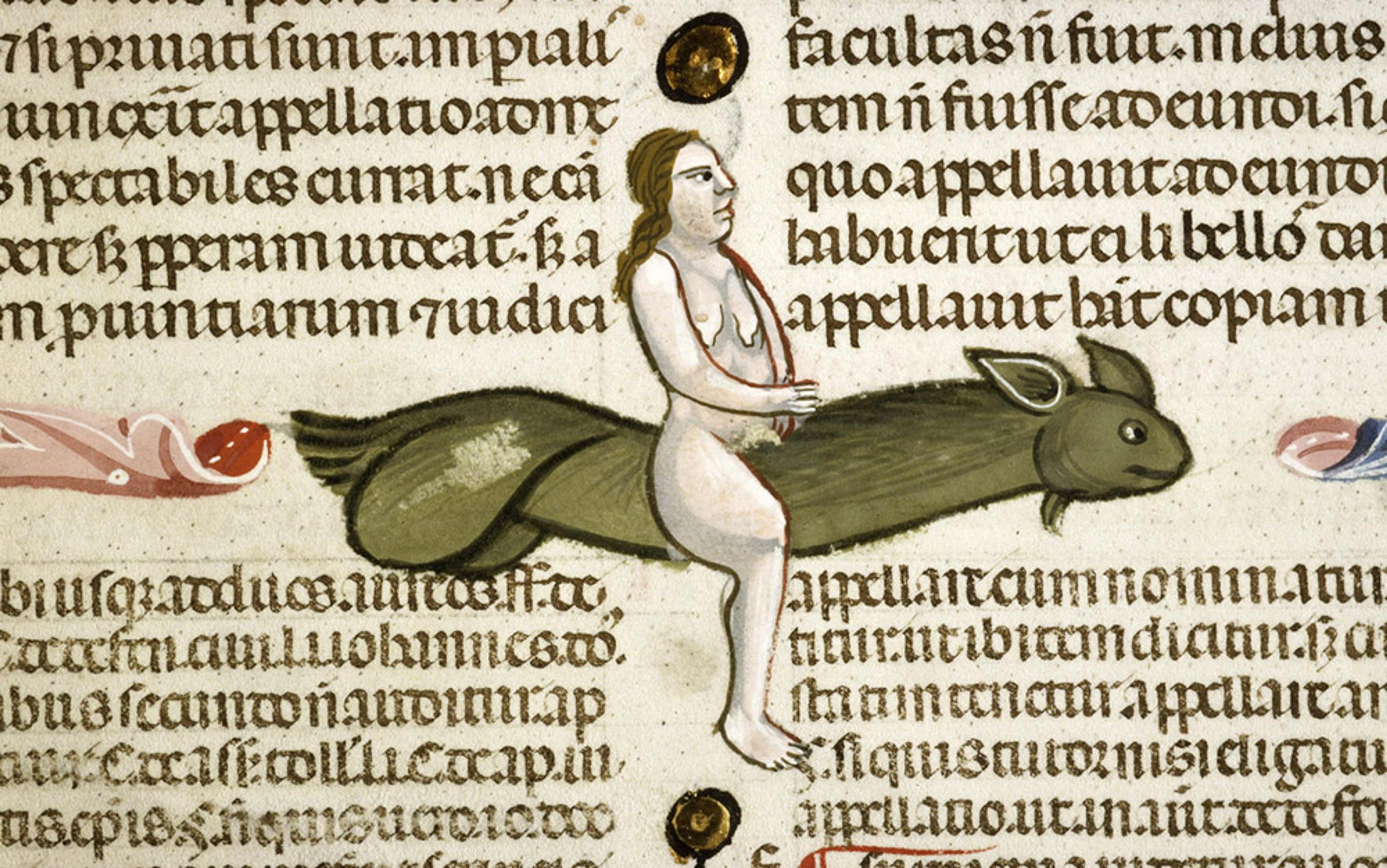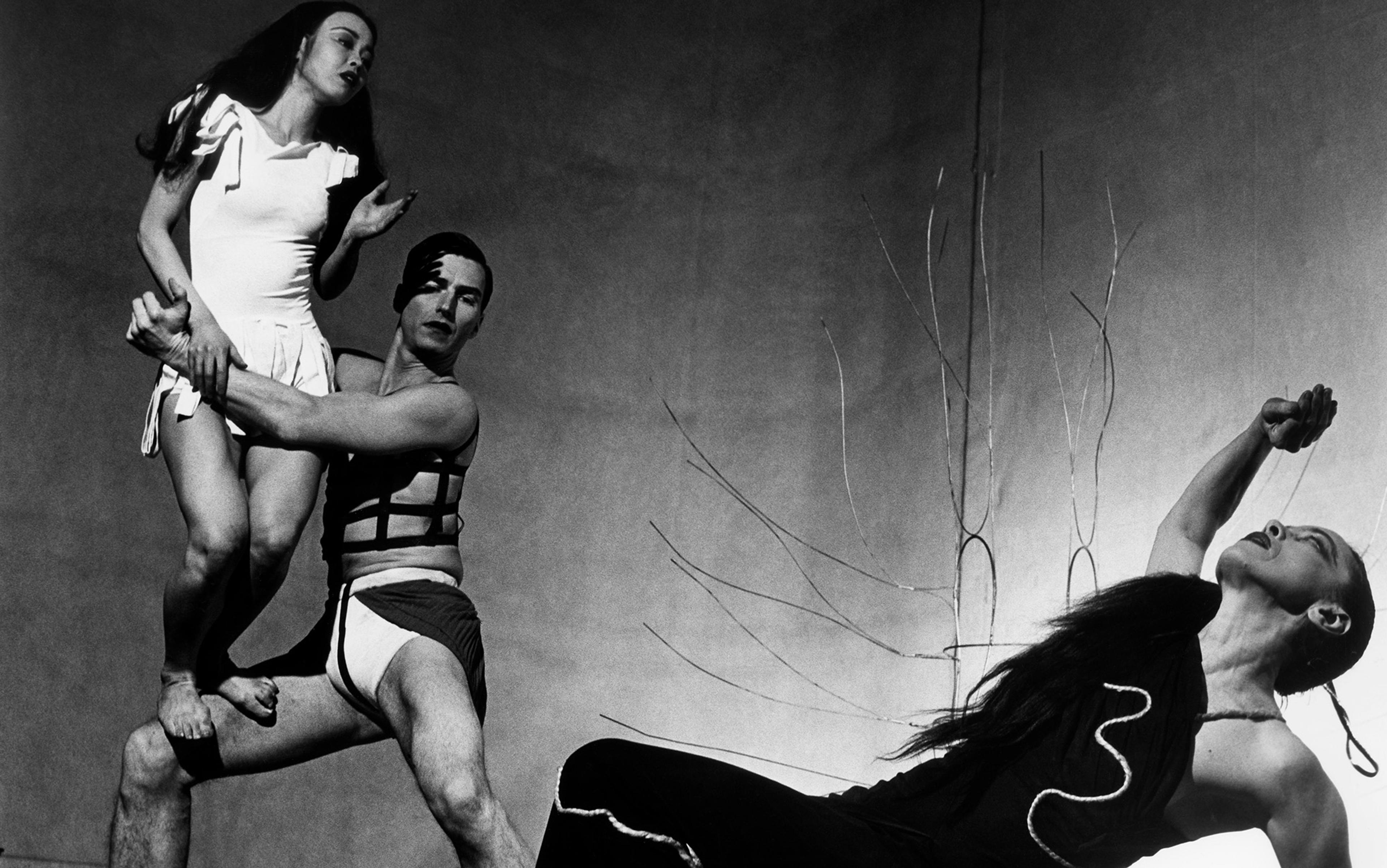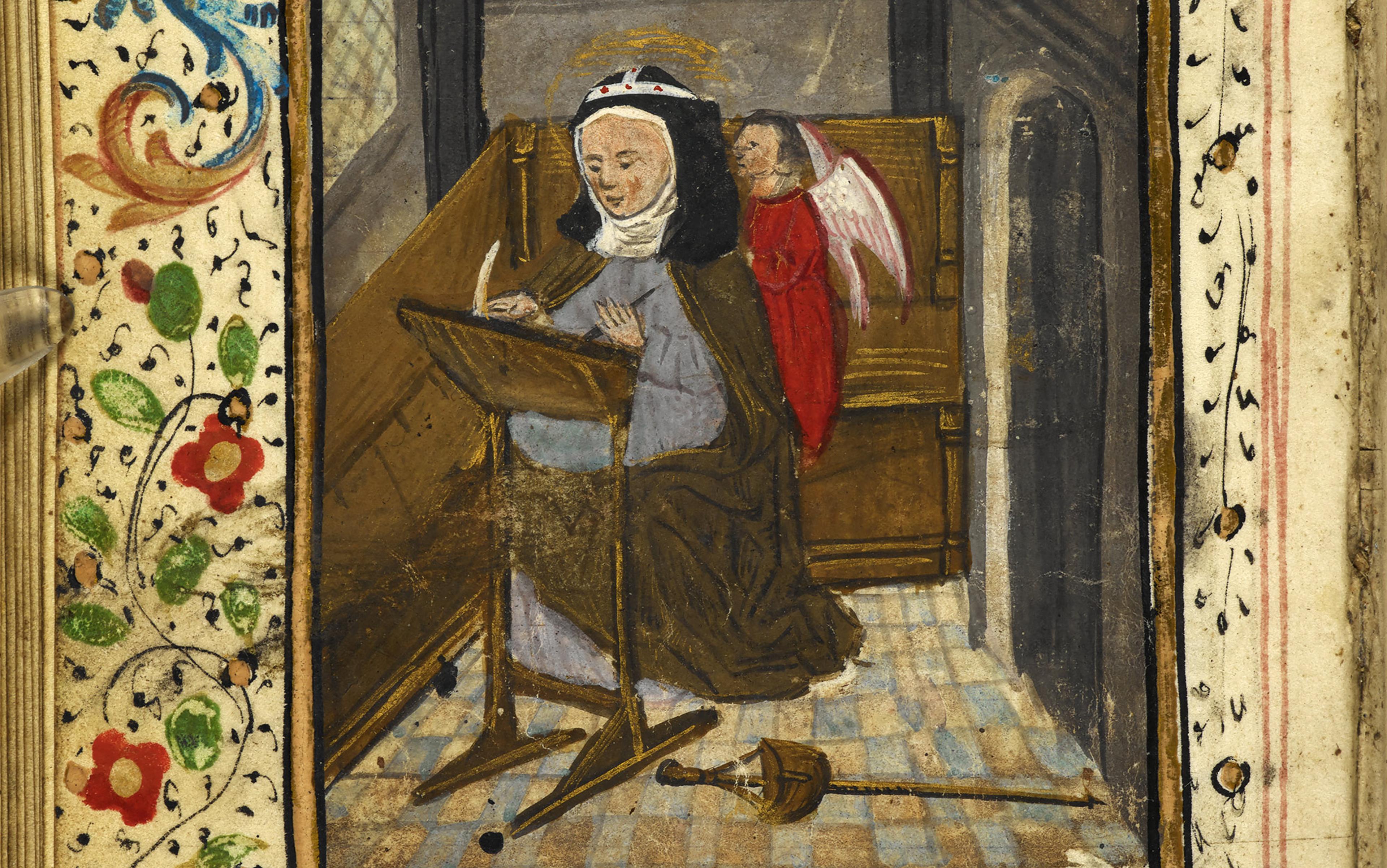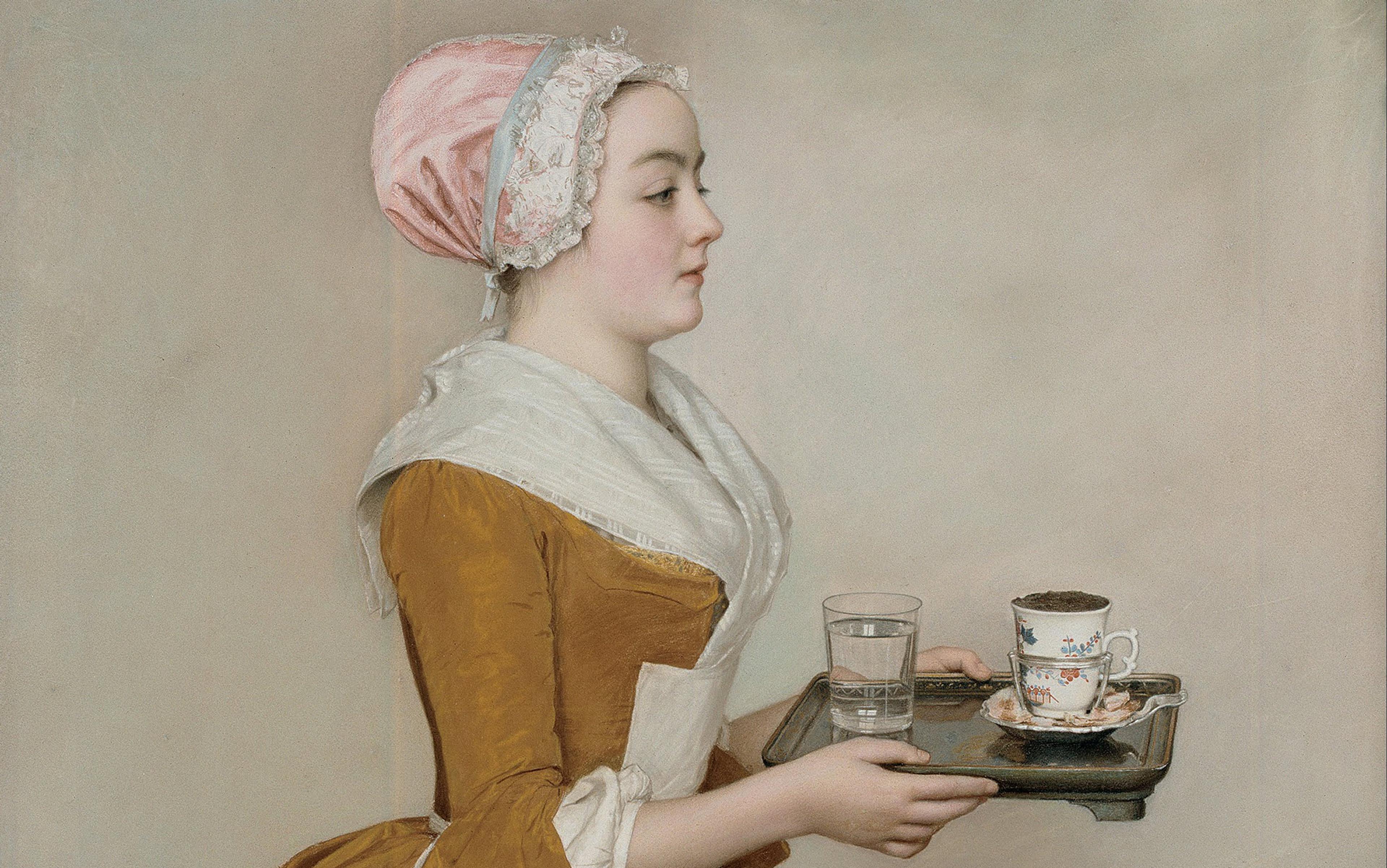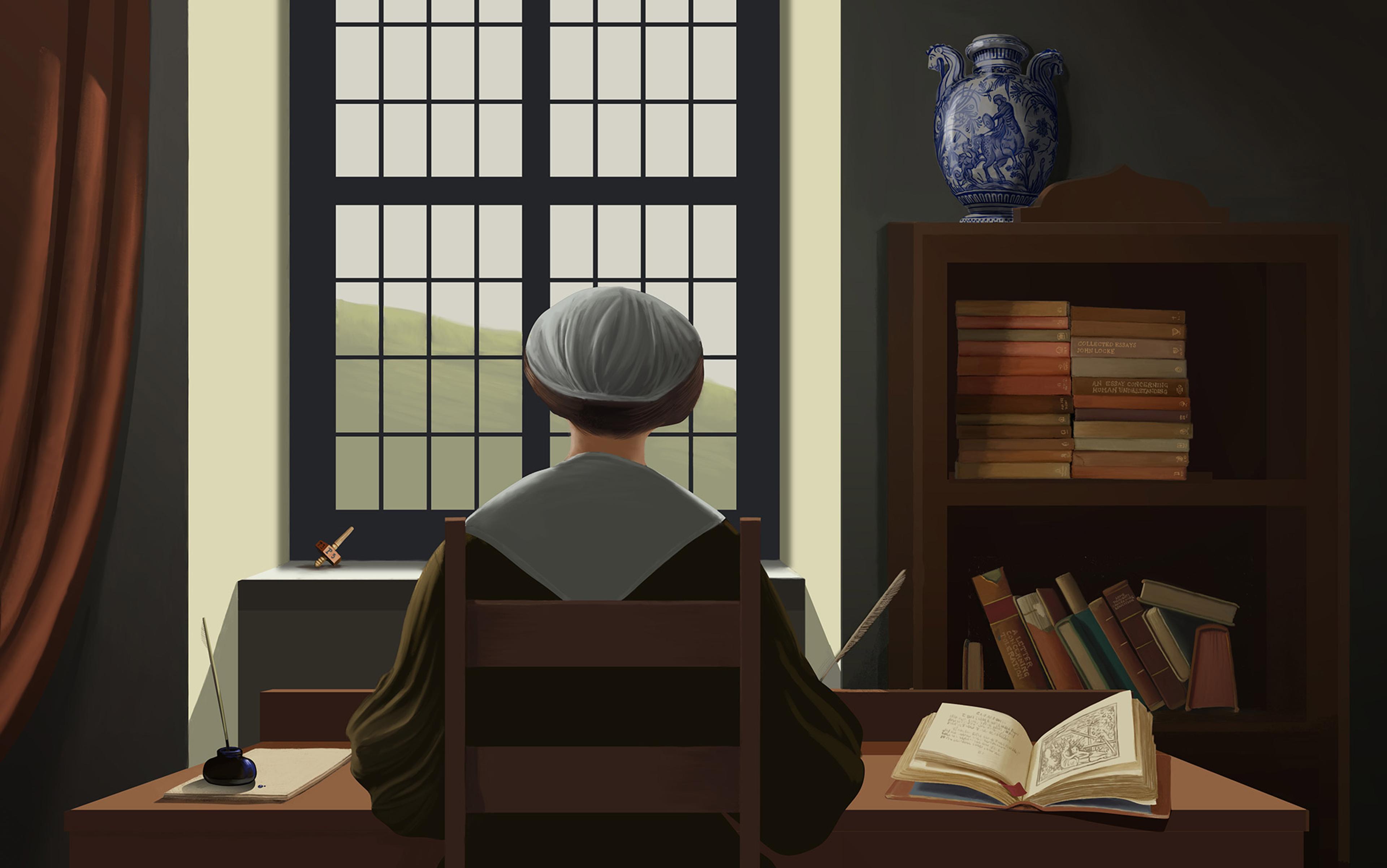Around the year 1116, Fulbert, the canon of Notre-Dame Cathedral, sought a live-in tutor for his gifted niece. The young woman was already well-known for her learning, so Fulbert chose an ostentatiously brilliant philosopher for the job. The man he hired had already challenged some of the best minds of his time, and was currently employed as master of the schools at Notre-Dame. He was a leading light of the Parisian intelligentsia. Given complete authority to teach and punish Héloïse, Abelard seduced her instead.
Abelard and Héloïse’s affair seems to have been consensual, but it was shaped by the power difference typical of a teacher-student relationship. In The History of Calamities, an autobiographical work he wrote 15 years later, Abelard recalls how he and Héloïse spent their lessons inventing new erotic pleasures together. More darkly, he remembers the strategies he used to keep Fulbert from discovering them: ‘If, to avoid suspicion, I sometimes struck her, my blows were the marks not of anger but of the tender affection that is sweeter than any perfume.’
Violence soon lost its charms. After being found out, Abelard secretly sent the pregnant Héloïse to his sister’s home in Brittany to give birth. Then, to appease her furious uncle, Abelard pressed Héloïse to marry, despite her many arguments against the institution. Finally, in order to protect her from her kinsmen’s abuse, Abelard moved his wife to an abbey in Argenteuil and had her put on a nun’s habit. Héloïse’s relatives presumed that Abelard was attempting to rid himself of his bride by committing her to the monastic life. They revenged themselves by castrating him.
Their story of doomed love and epic transgression rendered Abelard and Héloïse immortal. Writers from Jean-Jacques Rousseau and Alexander Pope to Mark Twain and Anne Carson retold it. Their lives and letters served as the basis of at least two novels, a Broadway play, and a steamy feature film. The protagonists even appeared as lustful puppets in the movie Being John Malkovich (1999). It was a campus novel avant la lettre, and seemed to be recognisably modern in its psychological configuration of a narcissistic genius abusing a nubile prodigy.
In fact, the entanglement of pain, desire and teaching in the lives of Héloïse and Abelard is deeply medieval. Education fascinated writers of the Middle Ages: what ought to be learned, how learning works, and the difficult emotions that accompany the process. They thought that desire, suffering and fear were a fundamental part of the teacher-student relationship, and not simply because medieval people were barbaric or uncaring towards their young. They understood that corporal punishment could make pupils rebellious, and that teachers could take advantage of their authority to exploit their students’ affection. Still, medieval stories reveal a complex approach to pedagogy, one that censured extremes and abuses of emotion, but – importantly – not the feelings themselves. Dread, love and pain could destroy teaching; in moderate doses, and restricted to the imagination, they could also make it work.
Stereotypes associate the Middle Ages with the unthinking use of violence, unenlightened discipline and retrograde hierarchies. In most European languages, the word ‘medieval’ carries negative connotations. It means antiquated, as well as tyrannical or dystopian. It’s used as a modifying adjective or synonym for torture and warfare, even when those acts of violence are carried out by 20th-century means. The faux-medieval fantasy TV series Game of Thrones (2011-) and the line ‘I’mma get medieval on your ass’ in the film Pulp Fiction (1994) have done little to help the period’s image.
We know that medieval educators resorted to the whip, paddle or rod on a regular basis, especially when teaching young children. The association between teaching and corporal punishment was so strong that, when Grammar appears as an allegorical figure in medieval poetry, sculpture or painting, she does so bearing an instrument of pain. Masters, too, were pictured with rods or birches in book illustrations. None of this means that all people in the Middle Ages approved of using violence in the classroom, or of using it indiscriminately.
While physical discipline would have shocked no one in the period, the sources also tell us that opinions regarding its use ranged widely. The 9th-century monk Hildemar wrote a commentary on the Benedictine Rule in which he argued that boys dedicated to the monastery should be watched so carefully that they never had a chance to break rules. Any kind of punishment, including beating, should be a last resort. Hildemar saw the need for discipline as a sign that teachers had been lax in surveilling their pupils. The English historian Eadmer tells a story about Saint Anselm in which an abbot complains to Anselm that, despite constant beating, his boys behave worse rather than better. Anselm upbraids the abbot for raising the children like animals, and argues that he is hindering their development and teaching them only to hate their master. Instead, Anselm suggests that the teachers lay aside their whips and offer their students the ‘solace and relief of fatherly compassion and gentleness’.
Affection, even love, was also an accepted part of teaching. This is not surprising, given the parental role so many medieval teachers must have played in the lives of their disciples.
Early medieval monastic schoolrooms were often filled with ‘oblates’, children who had been consigned by their parents to the institution, where they might stay until death. Between the monastery’s walls, oblates found a new family, and the magister, or teacher, was the most important figure in their new lives. In later medieval grammar schools, children could at least look forward to leaving some day to pursue other education or work. Still, many pupils boarded at school, in private houses, even with the schoolmaster. Finally, as Abelard and Héloïse’s history demonstrates, well-off students and their private tutors might well live under the same roof and spend enormous amounts of unsupervised time together.
‘A hailstorm of slaps and blows poured down … as he tried to force me to learn what he couldn’t teach’
Close quarters produced close ties. Then, as now, they also led to knotty affections, a messy commingling of admiration, resentment, fear and love. The example of Guibert of Nogent captures the typical complexity of a pupil’s feelings for his teacher. Born around 1060 near Beauvais, in northern France, Guibert was the son of a couple who needed seven years and the aid of witchcraft to consummate their marriage. Guibert’s father died when he was an infant; his mother, who enjoyed an independent widowhood, focused on obtaining a good education for her gifted son. Using her position and network, she convinced one of the few grammar teachers available to leave his current position with Guibert’s cousins, move into her home, and teach her son to read and write Latin.
Guibert’s teacher was venerable. He had integrity. He watched little Guibert like a hawk, keeping him from eating out, receiving gifts or playing games. Unfortunately, he did not, according to Guibert, know much Latin. Having begun learning the language in advanced age, the master had little mastery, and he concealed his incompetence by beating his pupil mercilessly. As Guibert recalled in his autobiography Monodies (1115), ‘a hailstorm of slaps and blows poured down on me almost every day as he tried to force me to learn what he couldn’t teach’.
Like many students, Guibert developed a keen sense of his teacher’s flaws, at least with the benefit of hindsight. His teacher lacked moderation, and without moderation, Guibert knew, overexerted pupils would become exhausted. The emotional part of the relationship was something else entirely, however. As his master increasingly assumed the role of a parent, he and Guibert’s mother began to compete for the boy’s affections. On one occasion, suspecting that her son was hiding the extent of the beatings he endured, she pulled off his shirt, uncovering the bruises and welts on his back and arms. In horror, she exclaimed that he would never be a cleric or learn Latin. Young Guibert was defiant: ‘Even if I were to die from it first, I will not stop studying Latin, or trying to be a cleric!’ Guibert seems to have responded to his master’s cruel love, or saevus amor, with intense reciprocal devotion. Perhaps the elderly, unqualified grammar teacher had assumed the paternal role in Guibert’s affections and home.
It is also possible that Guibert loved the positive qualities that he could discern underneath his tutor’s many failings. His teacher, after all, did genuinely love him, and assumed a moral guardianship for which the adult Guibert, a monk, was grateful. But the nature of the master’s feelings, as we hear them described by Guibert, were also not narrowly pedagogical. While deliberating whether to leave his previous position, the tutor had a dream of an old man who brought Guibert into his bedroom-qua-classroom, pointed to the teacher’s bed, and said to the boy: ‘Go to him, for he will love you greatly.’ As the vision continued, Guibert ran to his future tutor and covered his face with kisses. When the teacher awoke, he felt such affection for Guibert that he agreed to move to his household.
This 11th-century teacher’s unreflective, gratuitous and relentless use of corporal punishment reveals one axis of the medieval teacher-student relationship. His violence is easily understood as the kind of senseless tyranny that the word ‘medieval’ sometimes suggests. Viewed from another perspective, things are not so clear. After all, the tutor worked for Guibert’s wealthy, well-connected mother. Leaving households like hers could be a tricky matter for a private teacher. The tutor seems to have been emotionally vulnerable too, having changed his home and career for a boy in a dream. He felt bound to little Guibert by a mutually responsive affection, and Guibert seems to have felt it as well. Each one loved the other for their love, or their capability for loving.
Abelard and Héloïse, and Guibert and his tutor, show us how complicated the emotions between teachers and students could be in the Middle Ages. But they are just part of the story. For one thing, all of them lived within a century of each other in what is now France. The medieval world was of course much bigger. Moreover, both Abelard and Héloïse, and Guibert and his tutor, are cases of teacher-student relationships that went wrong in many ways, rather than ideals or models. Yet the themes that they evoke – teacherly love fused with manipulation, discipline that veers into abusive violence – appear in schoolbooks for centuries, from the early Middle Ages well into the Renaissance.
Time and again, medieval teachers wrote or chose teaching material that moderns would consider unsuitable – if not downright traumatising. Take the example of Ælfric Bata, a monastic teacher active around the year 1000. He composed a set of surprisingly modern dialogues to teach his pupils conversational Latin. The imaginary boys of his Colloquies learn simple phrases for describing the weather, playing outside, eating and drinking, telling the time, and planning a trip. Still, the Colloquies would be difficult to imagine in a 21st-century classroom. The boys argue viciously, at one point descending into a raucous exchange of insults in Latin, such as ‘Tu scibalum ouis’ (You sheep shit!), ‘Tu fimus bouis’ (You cow dung!), and ‘Tu stercus porci’ (You pig turd!). Characters threaten each other with violence, and a teacher savagely beats a boy accused of stealing an apple. The older monks, who ought to be carefully watching over the boys’ moral upbringing, barely know how to behave themselves. They get roaring drunk before going to pray, ask boys for kisses or to accompany them to the toilet.
It would be a mistake to think that these acts were more innocent then than now. The Regularis Concordia, a late-10th-century guide to monastic life, prohibited hugs or kisses between older monks or abbots and children. Instead, older monks were told to love younger ones only in their hearts, and with ‘great caution’. Nor were older and younger monks allowed to go off in pairs, even if the excuse was a spiritual matter. The teacher was to accompany his pupils at all times, watching to prevent sexual activity or abuse. In fact, even teachers were enjoined not to spend time alone with boys, and to make sure a third person was always present as a chaperone. While Bata’s monastery might not have adhered to these rules strictly, there is good reason to think that he knew them. He peppered his Latin scenes of daily life with worrying details, with opportunities for danger. And he did so on purpose.
Students acted out feeling tempted or preyed-upon, so as to learn how to say yes – or no
Why was Bata having his boys memorise and recite bathroom humour, fights, beatings and come-ons? Some scholars think of him as a rogue figure, a millennial bad boy who ran a chaotic classroom. Or the monastery itself was freewheeling, untouched by contemporary innovations in the avoidance of sin. But the evidence that Bata was describing the monastery he lived in is slim. The passages of his textbook that hint at intimacy are in fact adapted from older Latin dialogues, with small changes to introduce the possibility of danger to young monks. Bata filled the Colloquies with threats of physical violence and sexual abuse partly because he understood the power of negative language. Throughout his dialogues, he teaches boys to complain that they lack necessary items, to claim they cannot do a variety of tasks, and to lament their suffering in the highest rhetoric. Bata’s lessons were shocking, dramatic, sometimes funny, which made Latin easy to memorise.
Bata also had another goal, beyond the teaching of conversational Latin. He had his students recite – perhaps even act out – scenes in which they might have felt vulnerable, tempted, guilty, angry, preyed-upon. He had them imagine a community where the grown-ups were often unreliable, cruel or suspiciously friendly. And he had the boys try on responses. He taught them how to say yes and, just as important, he taught them how to say no.
Bata was not the only medieval educator to adopt salacious or violent material to educate students. Of course, there was plenty of what we would consider ‘child-appropriate’ material too. Medieval teachers responsible for conveying the basics of reading, writing and Latin grammar often posed clever little riddles, taught wise proverbs and animal fables, had their pupils sing and memorise the Psalms. Still, as their pupils progressed, teachers introduced more difficult material. In England before the Norman Conquest, a favourite classroom text was Prudentius’ Psychomachia. This allegorical description of a battle between Vices and Virtues, written by a 4th-century Latin poet, features gory accounts of one-on-one combat between women warriors. Faith attacks Worship of Old Gods, strikes her head to the ground and tramples her eyes with her feet. Chastity pierces the throat of Lust the Sodomite, causing her to vomit hot fumes and blood.
The poem is meant to convey the vigour with which a good Christian fights sin, but it often luxuriates in its graphic violence. Its vivid battle scenes were often illustrated in the manuscripts too, helping students imagine the abstract allegorical figures with all the liveliness of a comic strip.
Schoolboys after the turn of the millennium also encountered violence in their instructional material, and it was more likely to be sexual. The 12th-century Latin poem Pamphilus, a medieval and Renaissance bestseller, was a standard classroom text. In it, the young Pamphilus tries to seduce Galathea, an unmarried virgin. When they meet for what might be the beginning of an affair, he gives her no chance to consent. Although the poem is composed only of speeches, the rape is made explicit in Galathea’s cries of struggle, pain and shock. Ovid’s Metamorphoses and Art of Love, both popular in late-medieval schools, also include descriptions of sexual violence, sometimes endorsed by Ovid as a seductive move. The plays of Terence, another mainstay of the classroom, feature rape as a plot device, leaving its women victims mostly silent and offstage. To a significant extent, the literary culture of the Middle Ages was rape culture.
It is hard to imagine that such an education, mostly reserved for men, did much good to the women they encountered later in life. Yet we must not presume that boys who read stories of rape always identified with the perpetrator. In antiquity, composing passionate speeches in the voices of wronged or mournful women served as a common rhetorical exercise. It probably did so in medieval classrooms too. Literate youth learned to compose poetry and deliver speeches by imaginatively occupying the positions of both men and women, by channelling brutal desire and violated outrage. In the classroom, boys became men through the pain of women.
We diminish Héloïse if we see her as an eternal teenager, a mere victim of Abelard’s narcissistic love
Which brings us back to Héloïse. Some 20th-century scholars claimed that she had, in fact, not written the letters ascribed to her, that Abelard or a later male cleric had composed them in her voice. The theory is consistent with the tradition of learned medieval men writing and inhabiting the imagined voices of lamenting women. It also fits with her lasting image in popular culture as a docile pupil, seduced by her teacher’s intellectual and poetic gifts.
But it is unlikely that Héloïse was Abelard’s inferior, or needed to have letters written for her by any man. She had enjoyed a literary education even before she met her future husband, and was capable of writing stylised Ovidian laments if she wished. We diminish Héloïse when we imagine her as an eternal teenager, a mere victim and creation of Abelard’s narcissistic love. While their brief affair led to difficult times for both, Héloïse graduated to the more successful monastic career. Abelard moved between monasteries for the rest of his life, survived a murder attempt by his own monks, and was twice persecuted for heresy. Meanwhile, Héloïse grew into a capable administrator. She guided the convent she and Abelard had founded for 35 years, stabilised its finances, and oversaw the founding of five daughter-houses.
Although the passionate and destructive pedagogical relationship with Abelard altered the course of her life, Héloïse, in the end, was equal to her teacher. Her writing reveals the unexpected suppleness of medieval education, the way a pupil could turn its severe lessons to her own ends. Raised in a system in which the poetic lamentations of women were part of a puberty rite for elite boys, she spiritedly complained about Abelard’s neglect of her and her convent. Brought up on the classical authors usually taught to men, she used her learning to lead a community of women, navigate treacherous contemporary politics, and craft her own literary voice.

